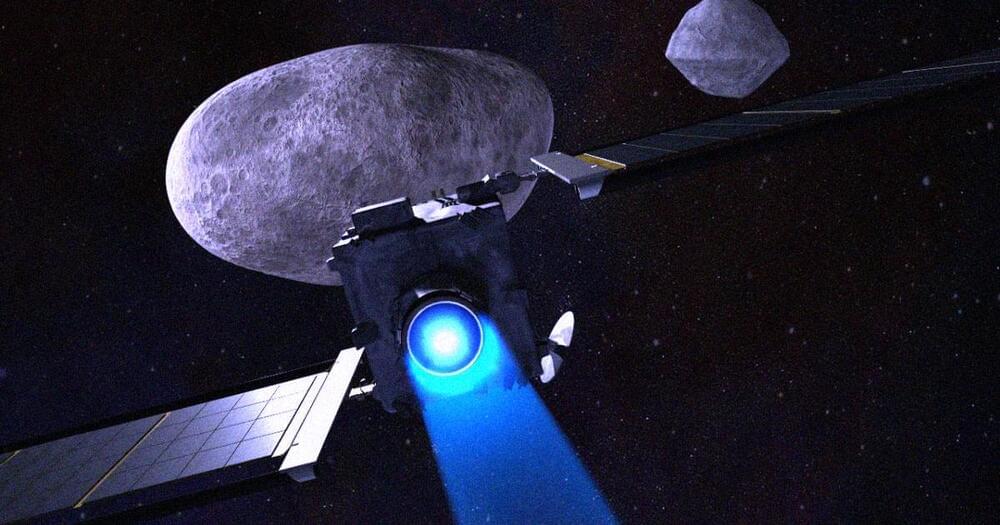The coldest continent on Earth used to be as warm as Italy. Here’s how we know.
A polar expedition drilled into the seafloor and unearthed 90-million-year-old tree roots.


A floating, robotic film designed at UC Riverside could be trained to hoover oil spills at sea or remove contaminants from drinking water.
Powered by light and fueled by water, the film could be deployed indefinitely to clean remote areas where recharging by other means would prove difficult.
“Our motivation was to make soft robots sustainable and able to adapt on their own to changes in the environment. If sunlight is used for power, this machine is sustainable, and won’t require additional energy sources,” said UCR chemist Zhiwei Li. “The film is also re-usable.”


NASA is launching a spacecraft destined to slam into an asteroid as part of its Double Asteroid Redirection Test (DART) mission tonight, from the Vandenberg Space Force Base in California. Its purpose: to test whether we’re capable of deflecting a killer asteroid before it strikes Earth.
But before it meets its final destination, NASA is using the spacecraft to test out brand new ion drive technology — and it’s straight out of a science fiction movie.
The space agency’s Evolutionary Xenon Thruster-Commercial (NEXT-C) uses the spacecraft’s solar power to create an electrical field. This field then accelerates a xenon propellant to speeds of up to 90,000 mph, harnessing the resulting stream of “thousands of ion jets” as propulsion.

Cazenovia High School student Rio Harper taught his computer, using Artificial Intelligence — or A.I. — to create a variety of images. He has made mney off of the creations, and has developed ideas about how A.I. might shape his, and our, futures. Syracuse University Audio Production students T. Michael Collier and Cole Strong have this profile.

Syngas is an important feedstock for modern chemical industries and can be directly used as fuel. Carbon monoxide (CO) is its main component. Direct conversion of widespread renewable biomass resources into CO can help to achieve sustainable development.
Conventionally, bio-syngas is mainly produced through thermal-chemical processes such as pyrolysis, steam reforming or aqueous reforming, which require high temperature and consume a lot of energy.
Recently, a research team led by Prof. Wang Feng from the Dalian Institute of Chemical Physics (DICP) of the Chinese Academy of Sciences, in collaboration with Prof. Wang Min from Dalian University of Technology, developed a new method to directly convert bio-polyols into CO.

Astronauts on the International Space Station shared a festive message for people on Earth as they prepare to spend the holidays in orbit.
Expedition 66 crew members, including NASA astronauts Raja Chari, Thomas Marshburn, Kayla Barron, and Mark Vande Hei, ESA astronaut Matthias Maurer, and Roscosmos cosmonauts Anton Shkaplerov and Pyotr Dubrov, will be celebrating Christmas aboard the orbiting lab this year. The crew shared a special holiday message on Twitter, explaining what Christmas means to each of them and reflecting on childhood memories spent with family.
After centuries of failure, there is finally a way to use solar power to desalinate salty water, produce pure water for home and farm use and have housing in the raw desert.
The key energy driver is the Suns River desalination modules linked with Aquastill’s Membrane distillation – the process in which pure water is separated from contaminated water (salt water, for example) by means of evaporation through a membrane. The combination of Suns River and Aquastill brings productivity up to 50 liters/m2 or the equivalent of 6 times the solar energy input.
The venture is currently in the design phase to expand the 400 square meter demonstration site to produce 80 Cubic meters of pure water per day, expanding food production by 100 times. The site is off the electric grid and uses only solar and wind energy, meaning it has a zero carbon footprint. The demonstration site has been in operation for over two years.

